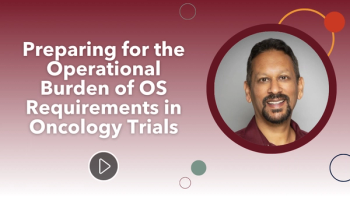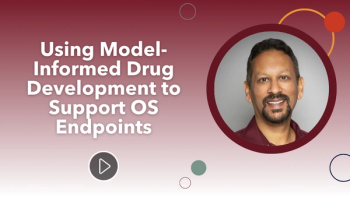
- Applied Clinical Trials-06-01-2008
- Volume 0
- Issue 0
EU Imbalances in Risks and Benefits
In the European Union, regulators are agonizing over more than just clinical trials.
The European Union's regulatory systems are based, in principle, on seeking the right balance between risk and benefit—whether it's a matter of testing new medicines, adjudicating on competition disputes or controlling imports. The application of the principle is often, of course, more complex. Some recent regulatory initiatives by the EU throw an interesting light on the process—and may be helpful in understanding a little more of how the EU does, and doesn't, work. That in turn may provide some small explanation to those who are continually amazed at how, in the clinical trials area, Europe often gets itself into such a tangle.
Peter O'Donnell
Modern measures
Exhibit one is an example of the EU trying to do things better with a public consultation it has just launched on how it should modernize its medical devices legislation that dates back some 20 years. These rules, just as for medicines, were intended to balance safety with support for free trade, innovation, and competitiveness within Europe. But as the EU now admits, "in recent years a number of drivers have come into play that require a revisit of this legislation."
Experience indicates, says the EU, that the current system does not always offer a uniform level of protection of public health in the European Union. New and emerging technologies present new challenges to the current framework, highlighting gaps and pointing to scarcity of expertise. In addition, in recognition that the medical device market is global, the EU needs to ensure some convergence between its rules and the globally applied rules if it is to remain competitive. There are three core legal texts dating back to 1990, supplemented by six modifying or implementing directives, including the last technical revision brought about by a directive just last year. The legal framework has also been criticized as fragmented and difficult to follow, fraught with national variation, concludes the EU analysis. No one familiar with the EU clinical trials regime could fail to spot the uncanny similarities.
So now the EU wants to secure wide input into how the rules should be updated and is inviting responses to a range of questions. Is the scope of the rules wide enough, or should other product categories be brought in? How is it possible to avoid different levels of assessment being applied in the EU? How can it ensure that the appropriate expertise is used in the evaluation of the most critical and innovative medical devices? What can be done to make the legislation more straightforward and readily understandable?
Thinking ahead
Perhaps in a bid to avoid the unsatisfactory nature of its revisions of the EU rules for clinical trials on medicines, this time the EU is trying to assess in advance the feasibility of possible changes to its rules on medical devices. It asks respondents to include in their answers as much social and economic data as possible, such as evaluations of actual or estimated costs (expressed in figures such as cost per device, cost per manufacturer, cost per national authority, cost per hour, cost per man-day) and other relevant quantitative figures. "Particular emphasis on the impacts, costs, and savings to small- and medium-sized enterprises would be welcome," it says.
Europes Slice of the Industry
The current system, market surveillance, and transparency "does not offer as high a level of protection of health as possible," says the EU. The EU's growth to 27 member states has increased the number of competent authorities (they are known as "notified bodies" in the EU's medical device rules) to nearly 80. In consequence, the original system of oversight needs modifying to ensure harmonized interpretation of tasks and consistency of vigilance and monitoring. Above all, says the EU, it needs change "to assure uniform levels of safety, in particular in the field of clinical evaluation."
Vigilance data on serious incidents involving medical devices "is key to providing early warning of safety issues," it says, noting that compared to similar markets, the EU has a low overall reported rate of incidents and variation in reporting rates per capita from member state to member state. "It is unlikely that medical devices are 'safer' if used within the EU, and, within the EU, even safer in some member states," the EU observes tartly, so "it is clear that the vigilance system and reporting of vigilance issues need to be improved." And when a vigilance issue is identified, stronger provisions are needed to ensure a common reaction in the market of the whole EU.
Not all member states have the necessary resources to survey their market, the EU points out. "And nor, due to competing national priorities, is there always the most desirable cooperation between member states to help fill this gap in resources," it adds, without pulling its punches. "Add to this a poor utilization of the current legal tools and you have a situation that can lead to internal market fragmentation and a possible threat to public health." Similarly, the EU points to "a general lack of basic information, such as what medical devices are on the market and to what extent they have been checked." And there is "insufficient formal exchange of information between the competent authorities."
The EU analysis also remarks on the "new and emerging technologies that have challenged the current framework, highlighting gaps or pointing to potential loopholes, including the scarcity of expertise needed to independently assess such technologies." The framework needs to fill these gaps and be made more robust to future technologies, it urges, particularly focusing on "one such technology that the current legislation needs to be broadened to cover": medical devices that consist of or which incorporate nonviable human cells and tissues. "This one example alone highlights the scarcity of expertise to assess such products both at a national and at an EU level," it says.
The failings identified in what the EU admits is a current framework that is "too fragmented and difficult to follow" are "further compounded by national variations, including different decisions on whether a product is a medicinal product or a medical device, differences in the classification of the same type of devices, and different registration requirements. This variation threatens not only the smooth functioning of the internal market, but could also threaten the health and safety of patients, health care professionals, and other persons," it warns.
The initial EU plan is to recast the entire framework for medical devices—active implantable medical devices, medical devices, and in vitro diagnostic medical devices—to incorporate devices consisting of nonviable human cells or tissues, to reinforce evaluation procedures for the highest risk category products, to consolidate expertise in a new Medical Device Committee inside the European Medicines Agency, and to make vigilance and market surveillance more effective and more coordinated between member states. Precisely how this evolves will depend to some extent on the input the EU gets from industry, academia, and the medical profession. Whether the problems it identifies in the current system—so similar to many of the problems in testing and developing medicines—will be overcome by this well-intentioned start to the process remains to be seen.
Biotech barriers
Exhibit two is an example of the EU at its worst. In early May all 27 European Commissioners—the top officials in the EU executive—held a long-awaited review of the EU rules on biotechnology. But their high-profile "orientation debate" did little to remedy the inability of the current EU legislation to balance risk and benefit, and instead demonstrated compellingly the EU's current impotence to regulate effectively in this field.
During an ambitious official statement after the biotech meeting, European Commission President José Manuel Barroso's spokesman said: "The purpose of the debate today was to take stock of where we stand and set out how we move forward on the pending authorization cases and longer term horizontal issues. The President wishes to make sure that the system works smoothly and enjoys ownership."
Many people share his wish, but the system just doesn't work smoothly or enjoy ownership.
The regulatory indecision demonstrated by vacillation over biotechnology reveals just how weak the entire EU apparatus is. The supremacy of member states contrasts sharply with the limited powers that they have delegated to Brussels. Those in the clinical trials community who lament the obstacles that national divergences create for multinational trials in the European Union will not be consoled to learn that their frustration is widely shared. But seeing the phenomenon reproduced in other sensitive areas of EU policy may also urge them toward the reflection that the EU itself may be starting to present an imbalance between risks and benefits.
Peter O'Donnell is a freelance journalist who specializes in European health affairs and is based in Brussels, Belgium.
Articles in this issue
over 17 years ago
Health Reformers Seek Effectiveness Dataover 17 years ago
A Case Study in eSubmissionsover 17 years ago
Outsourcing the Biotech Trialover 17 years ago
Experts Unite to Improve Trialsover 17 years ago
Roll With the Midtrial Changesover 17 years ago
AfroGuide: Putting Africa on the Clinical Trials Mapover 17 years ago
The Adaptive Advantageover 17 years ago
In Vitro to the Rescueover 17 years ago
Drug Information Association Ventures Into Indiaover 17 years ago
BriefsNewsletter
Stay current in clinical research with Applied Clinical Trials, providing expert insights, regulatory updates, and practical strategies for successful clinical trial design and execution.






.png)



.png)



.png)
.png)
